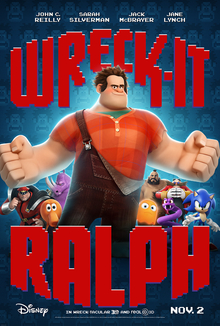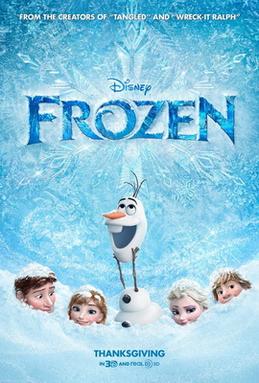So, in the beginning of previous week I read a seminar notice posted in KAIST Portal. This portal is basically an internal web that provides information to KAIST student and staff. Coincidentally, I checked the notice in seminar tab which in the top of it I saw a seminar organized by KAIST Graduate School of Culture Technology. I carefully read the notice and what made me surprise was the speaker of the seminar. The seminar would be presented by Gene S. Lee, Ph.D. according to that notice.
Who is he? Why it surprised me? What made me wanted to attend this seminar at first place?
It all because I saw where he came from. He is currently a Senior Software Engineer for Walt Disney Animation Studios. That's why dude. Because he is from DISNEY.
 |
| Walt Disney Animation Studio's Logo |
Who doesn't know Disney? Disney, founded by Walt Disney is a leading diversified international family entertainment and media enterprise (as stated in the company overview in its company website). Since its foundation in 1923 Disney has always been creatively finding its way in the show business and living the children dream. As an important division of the whole Disney company, the Walt Disney Animation Studios since 1937 have been producing more than 50 animation motion pictures which have been proved not only profitable, but also featured high quality story indicated by many awards won by the movies, including the most prestigious one the Academy Awards. List of animated movie produced by Disney since 1937 can be viewed here or in the short video below which was released on the celebration of Disney 50th Animated movie, Tangled (this video however hasn't include the most recent movies, Winnie The Pooh and Wreck-It Ralph). Because of these many years of experiences, the Disney's products are well known across the generations. I believe in their childhood our grandparents also watched Disney's movies. The key of success of Disney animated movie is not only limited to the rich story that can be enjoyed by all people, but also the basic principle of Disney that always improve their movie production, so every new movie will have better (graphical) quality than the previous one. This principle was later explained more in the seminar. The merger of Pixar into Disney in 2004, undoubtedly makes The Walt Disney Studio to be a giant in the field of animated movies.
50th Celebration Trailer of Walt Disney Animation Studios Movies (2010)
So, come back to the seminar. I was the first person to enter the seminar room last week. I saw the speaker's MacBook already set and the title slide of his presentation featuring various characters from Disney's animated movie appeared on the screen. I took a bold chance to capture the title's slide. Later, in the beginning of the seminar the speaker kindly asked the audience not to capture or record his talk due to the copyright matter and also one of the content of his presentation (Frozen) is still confidential because the movie hasn't been released yet. This was a lucky chance for us to learn about that new movie, so to pay some respect to his wish I decided to move away my iPhone and just listened to his talk carefully. So, the content that I used here, i.e. photos, videos, were obtained by employing the almighty Google search. Later during the presentation I learned that his presentation was actually prepared for a conference in Korea namely BIEN 2013, as he was invited to be one of the plenary speaker. You can view the official summary of his talk here.
 |
| Gene S. Lee |
 |
| WDAS Employees |
| Three movies discussed during the seminar. From left to right: Tangled, Wreck-It Ralph, and Frozen. | ||
Finished with the Tangled, the speaker explained about the challenges faced during the production of Wreck-It Ralph. The first one was many characters generation. This is the only Disney animated movie to have the most number of characters in one movie. The movie's story was about the adventure of a video game character into the realm of the other video game. That's why they need to generate a lot of characters. To create a character together with their (facial) expression was also a serious challenge. To overcome this problem they made their own programming language namely as dRig. This program also known as an artist-friendly object oriented programing, which allowed the artist to easily create the characters for the movie. As I also remembered, the second challenge was related to controlling the characters created. This is where the machine learning takes place. By employing machine learning, they wouldn't have difficulty even they had so many characters during production.
The last one, the speaker talked about the most recent project soon to be released during Thanksgiving holiday. This movie called Frozen used the most sophisticated technology applied in animated movie production and became the most graphically beautiful movie ever created so far by Disney. He discussed three challenges of these movies, the first one was visual effects. These movies included many visual effects since the theme of the movie is related to magic and sorcery. I'm not really understand how they solved the visual effect problem, since it was not conceptually explained as previous movie, but rather technologically approach was discussed. The second challenge was the multilayer cloth. Unlike Tangled, in this movie this problem was way much complicated since the background story told all of characters to live in freezing environment, then all characters must be equipped with multilayer cloth. The last challenge was snow behavior. He explained how they simulated the snow so the environment would seemed to be realistic. They also specifically invited the snow expert to give lectures about snow to the artist, software engineer and some other staffs participated in this movie. As one of the results they simulated the behavior of four types of snows (I didn't really recall all the types). He said, if you see the movie later, you will have the feeling that the character of the movie will experience real snow.
 |
| Souvenir from the seminar |
Disney's Frozen Teaser Trailer



This comment has been removed by the author.
ReplyDelete